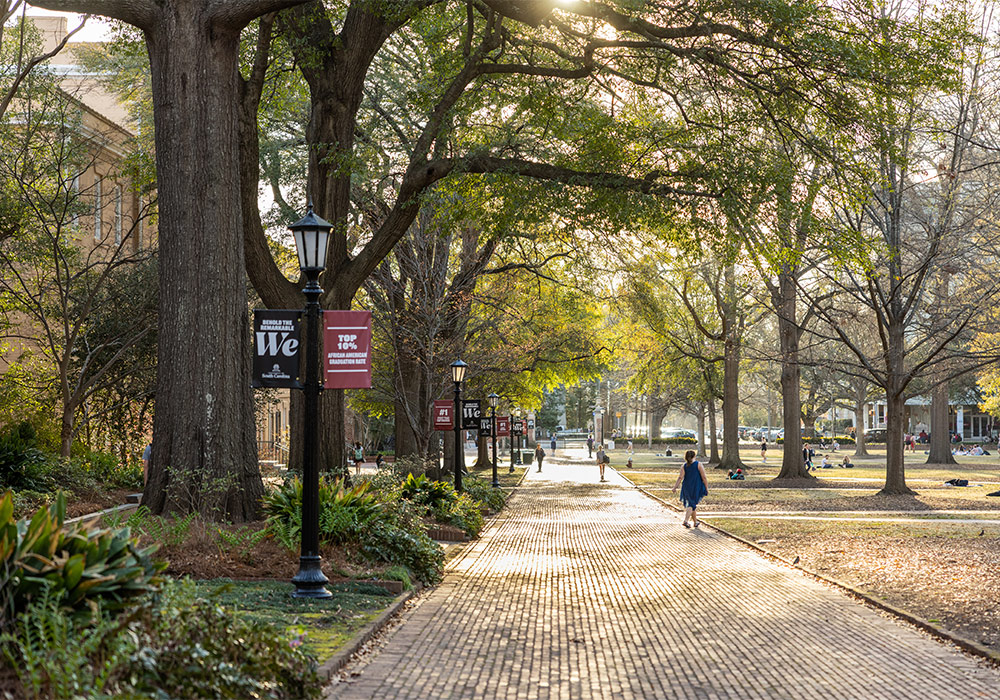Students plan for spring break.
Whether it’s a fun cruise to somewhere tropical, home to family or even a mission trip, they figure out where they want to go and what they want to do while lining up accommodations, travel and making sure their passport hasn’t expired.
The best students even prepare for possible issues that could come up while traveling.
While students are doing that, the University of South Carolina’s Emergency Management Team is working through scenarios to handle potential issues that could arise at the university.
The team — a group consisting of staff from divisions across campus — hosts monthly meetings led by USC’s Law Enforcement Division to stay updated on potential problems that may threaten campus operations.
“We work through that emergency management process of planning for prevention mitigation of either a natural or manmade incident that could impact campus,” says Capt. Scott Ellis from the Division of Law Enforcement and Safety. “But what sets us apart is we will also work on large events that may impact campus.”
That connectivity and discussion becomes stronger when they work through an annual tabletop exercise. During the exercise, which took place over spring break this year, the team builds a scenario, often with multiple layers on a timetable, and talks through how the university should respond to them.
These topics can range from weather events, chemical spills and more, all designed to asses emergency plans and how well they work.
“Without the ability to go through and test those plans, we don't know how accurate and how reliable they're going to be. We'll pick a specific scenario or threat, and we'll work through what we call injects or problems that we present to the team,” Ellis says. “We'll all collectively work through those in a real-time format. Our actions have to be based off of our current plans, our current resources and our current staffing.”
The group works in conjunction with partners at the local, state and national level like the South Carolina Emergency Management Division and the National Weather Service when heavy rains or severe weather may impact campus.
For example, the Emergency Management Team has mobilized quickly during a hurricane to house displaced students from the College of Charleston.
“It is a community approach,” says Ellis. “When we have a hurricane that impacts the coast, we'll work with some of our coastal campuses to transport their students up and shelter them, whether at USC Aiken or Clemson and other areas. It's not just about USC, it's how can USC assist and foster other colleges during an incident too. It’s a statewide effort.”
But the team has plans for many issues other than just weather, including handling hazardous materials and the aftermath of the “1,000-year flood” in 2015.
The team also hosted meetings in December 2019 to learn about about a burgeoning virus spreading in China. That early work helped inform university leadership of its options as COVID-19 morphed into the pandemic that sent all classes virtual in March 2020.
“COVID was obviously a big one for our campus,” Ellis says. “We learned a lot from that.”
During the group’s regular meetings, they discuss topics pertinent to campus, whether getting information from an internal source on upcoming projects or changes that may affect the group, to hearing from external constituent that could have an impact on campus. These meetings foster a connectivity that is vital in emergencies.
This team’s work — like last week's tabletop exercise — before anything arises helps keep the university resilient and able to withstand emergencies and disasters.
“It's important to understand some of those limitations," Ellis says. “And we'll use that down the road to develop partnerships with other agencies that may have resources we need to work with the state and nationally to make sure that we're well prepared. And a lot of times, we will take some of those injects or problems from real-world events that we see happening around us.”
